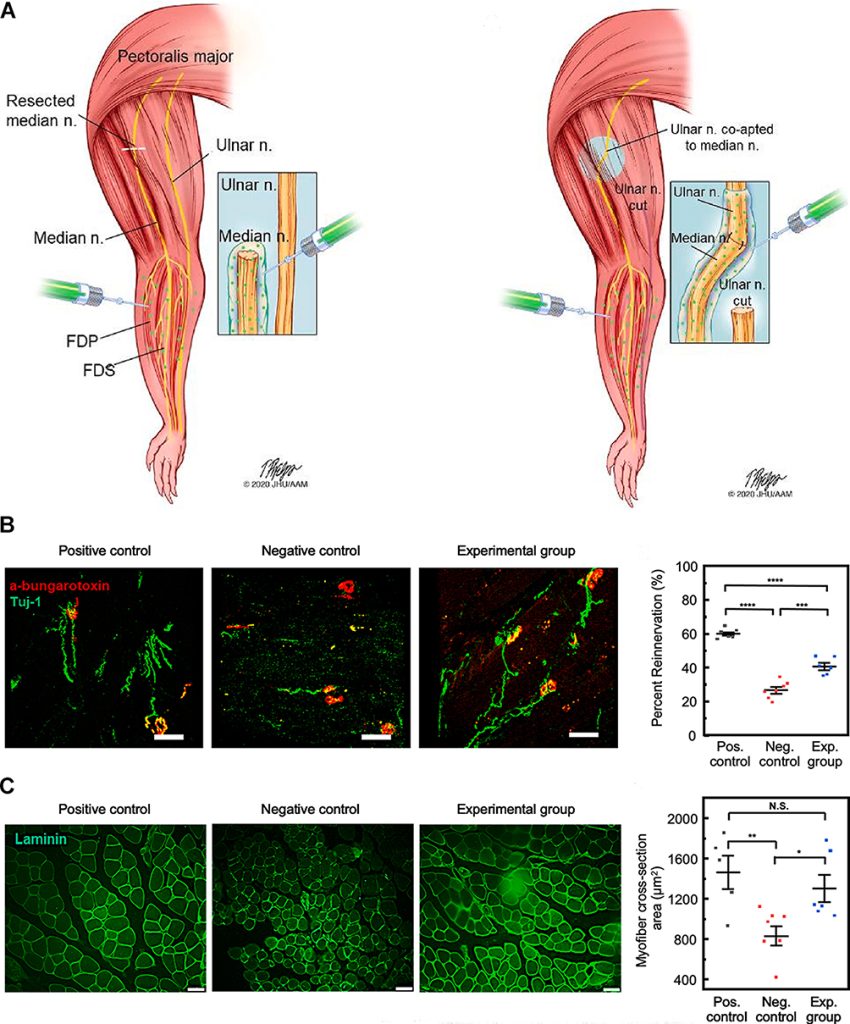Nanotechnology in Repairing Nerve Damage

Objective:
To explore how nanotechnology is being utilized to repair nerve damage, with a focus on its potential to regenerate neural tissue and restore function.
Introduction to Nanotechnology in Nerve Repair:
Nanotechnology is playing a pivotal role in advancing the repair of nerve damage, particularly in the brain and spinal cord, where recovery has historically been limited. Nanotechnology offers several promising approaches to improve the regeneration of neural tissue, enhance cell survival, and promote functional recovery. The ability to manipulate materials at the nanoscale provides new possibilities for treating nerve damage caused by trauma, disease, or degeneration.
Mechanisms of Nanotechnology in Nerve Repair:
- Neuroprotective Nanomaterials:
- Nanoparticles made from biocompatible materials like carbon nanotubes or gold nanoparticles can be used to deliver neuroprotective agents to damaged nerve cells. These nanoparticles help to protect neurons from further damage, support cell survival, and promote regeneration.
- Example: Nanoparticles loaded with antioxidant compounds can prevent oxidative stress in damaged neurons, a common cause of neurodegeneration.
- Nanostructured Scaffolds for Nerve Regeneration:
- Scaffolds made from nanomaterials provide structural support for nerve growth. These scaffolds can guide axons across injury sites and encourage nerve cells to regenerate. The nanoscale structure of the scaffold mimics the extracellular matrix, promoting cellular attachment, growth, and differentiation.
- Example: Polymeric nanofiber scaffolds have been used to support nerve regeneration in spinal cord injury models, with the fibers providing a template for nerve cells to grow along.
- Nanoparticle-Based Drug Delivery:
- Nanoparticles can deliver drugs or genetic material directly to damaged nerves. For example, they can deliver nerve growth factors (NGFs) to promote axonal growth or deliver gene therapy to stimulate the body’s repair mechanisms.
- Example: Nanoparticles that carry brain-derived neurotrophic factor (BDNF) can be used to promote neural regeneration in areas of the brain affected by injury or neurodegenerative diseases.
- Electrical Stimulation Using Nanosensors:
- Nanosensors can be integrated into the injured area to provide electrical stimulation to nerves, which can accelerate the healing process. This technique encourages neural activity, which is essential for nerve regeneration and the recovery of function.
- Example: Nanosensors that deliver low-voltage electrical pulses to injured spinal cord regions have been shown to enhance neuronal regeneration and functional recovery in animal models.
Applications in Nerve Repair:
- Spinal Cord Injury:
Nanotechnology is being used to develop scaffolds that not only provide structural support but also deliver therapeutic agents directly to the site of injury. The combination of these approaches could dramatically improve recovery after spinal cord injuries. - Peripheral Nerve Regeneration:
Nanomaterials have been employed to help regenerate peripheral nerves after trauma. Nanoparticle-based drug delivery systems have been tested to deliver growth factors that promote axonal growth and re-establish neural connections. - Parkinson’s Disease:
Nanotechnology is being explored as a way to deliver dopamine-producing cells or neurotrophic factors directly to the brain in order to treat neurodegenerative conditions like Parkinson’s disease.

Real-World Example:
- Carbon Nanotubes for Neural Regeneration:
- Research has demonstrated that carbon nanotubes can be used to create scaffolds for nerve regeneration. These scaffolds are able to guide nerve growth and allow for functional recovery in preclinical models of spinal cord injury.
Case Study:
- Nanoparticle Delivery of Nerve Growth Factors:
- In a study on spinal cord injury, nanoparticles were loaded with nerve growth factors (NGF) and delivered directly to the injury site. This approach promoted the regeneration of axons across the damaged area and led to improved motor function in animal models.